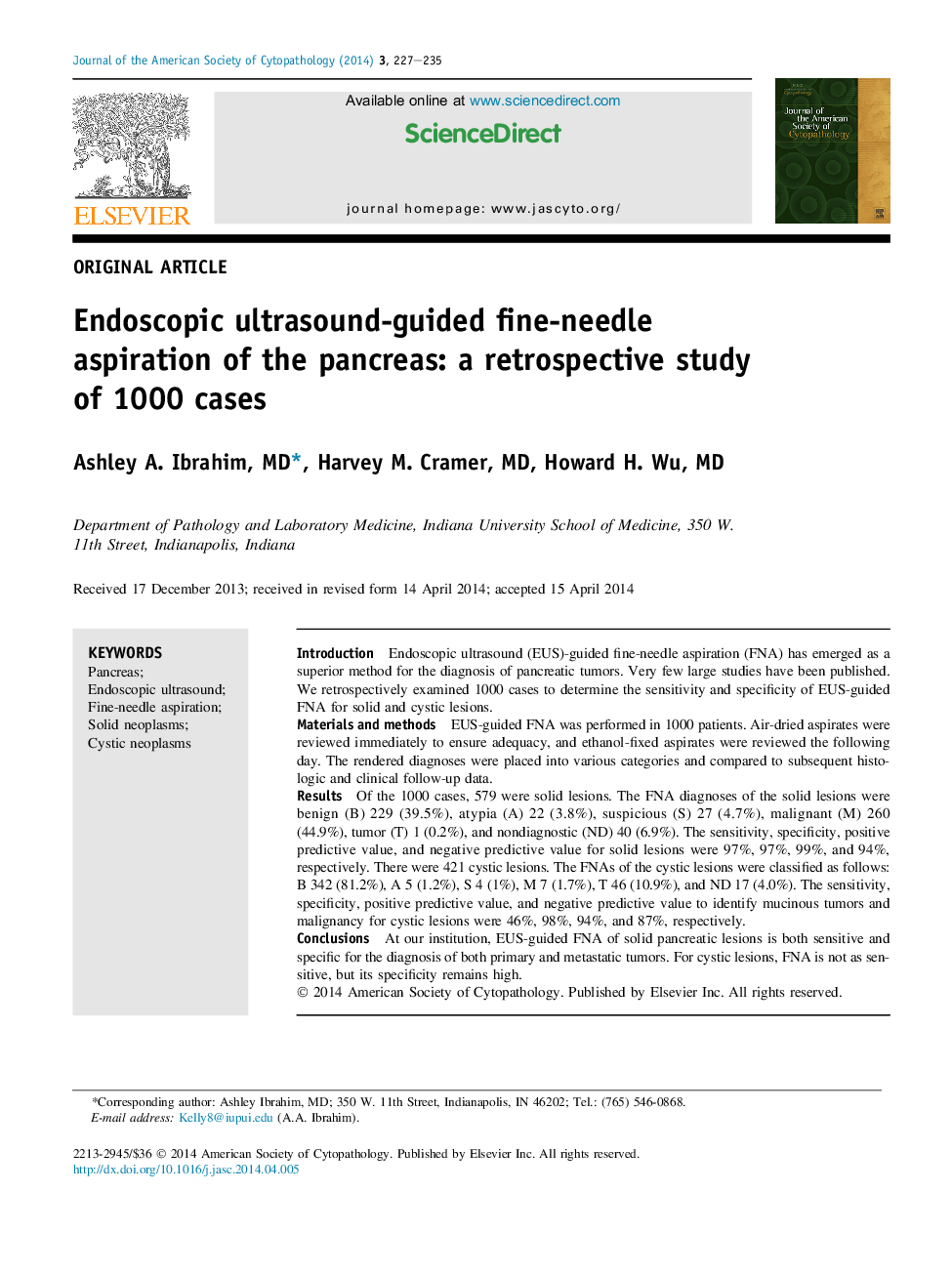| Article ID | Journal | Published Year | Pages | File Type |
|---|---|---|---|---|
| 2776448 | Journal of the American Society of Cytopathology | 2014 | 9 Pages |
IntroductionEndoscopic ultrasound (EUS)-guided fine-needle aspiration (FNA) has emerged as a superior method for the diagnosis of pancreatic tumors. Very few large studies have been published. We retrospectively examined 1000 cases to determine the sensitivity and specificity of EUS-guided FNA for solid and cystic lesions.Materials and methodsEUS-guided FNA was performed in 1000 patients. Air-dried aspirates were reviewed immediately to ensure adequacy, and ethanol-fixed aspirates were reviewed the following day. The rendered diagnoses were placed into various categories and compared to subsequent histologic and clinical follow-up data.ResultsOf the 1000 cases, 579 were solid lesions. The FNA diagnoses of the solid lesions were benign (B) 229 (39.5%), atypia (A) 22 (3.8%), suspicious (S) 27 (4.7%), malignant (M) 260 (44.9%), tumor (T) 1 (0.2%), and nondiagnostic (ND) 40 (6.9%). The sensitivity, specificity, positive predictive value, and negative predictive value for solid lesions were 97%, 97%, 99%, and 94%, respectively. There were 421 cystic lesions. The FNAs of the cystic lesions were classified as follows: B 342 (81.2%), A 5 (1.2%), S 4 (1%), M 7 (1.7%), T 46 (10.9%), and ND 17 (4.0%). The sensitivity, specificity, positive predictive value, and negative predictive value to identify mucinous tumors and malignancy for cystic lesions were 46%, 98%, 94%, and 87%, respectively.ConclusionsAt our institution, EUS-guided FNA of solid pancreatic lesions is both sensitive and specific for the diagnosis of both primary and metastatic tumors. For cystic lesions, FNA is not as sensitive, but its specificity remains high.
